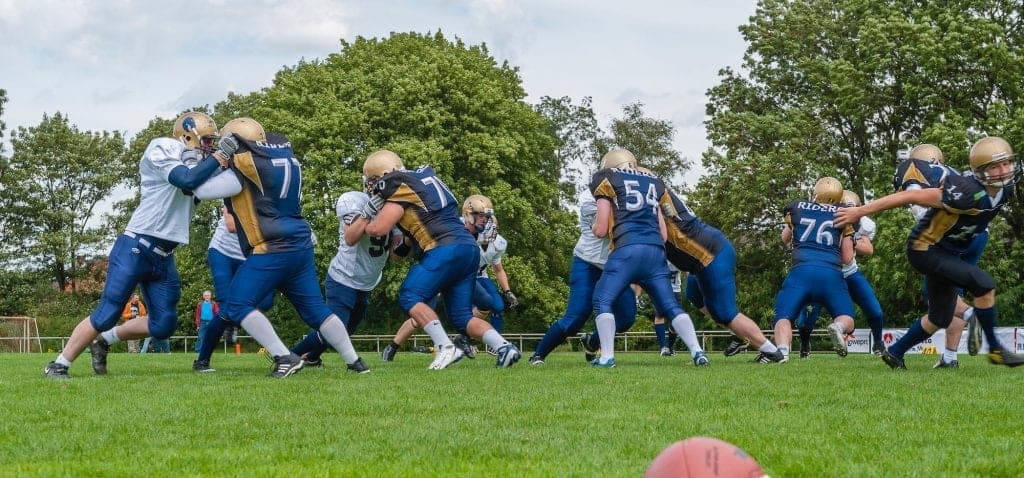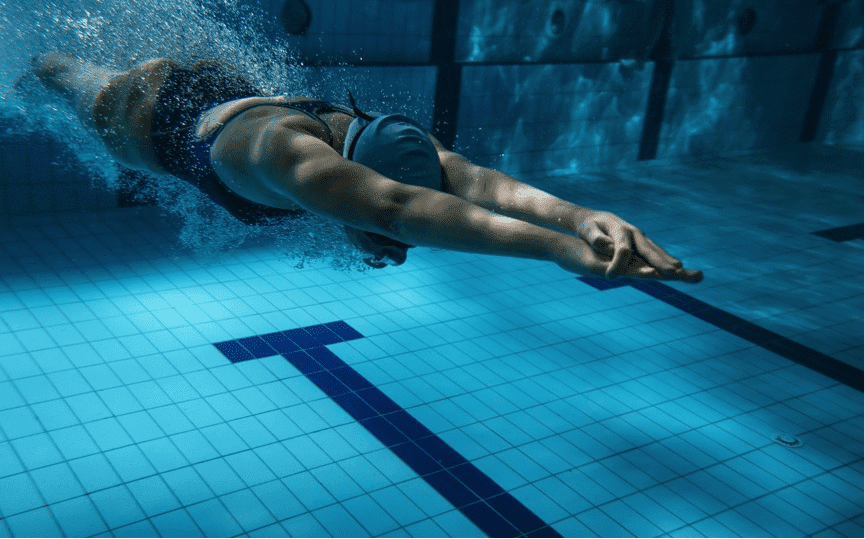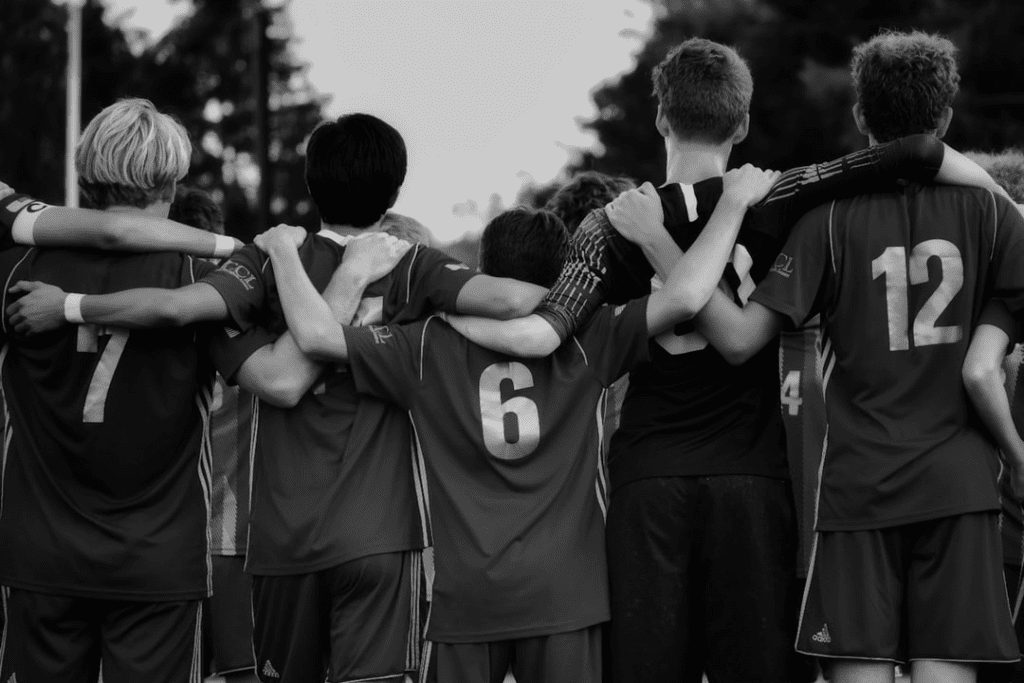In a team it can be difficult to understand why tension can develop between some athletes, yet other athletes gel from start. In this article we discuss the team tension between the different DISC styles in a team environment, due to their different priorities in pace and relationships. We then explore some simple yet effective strategies you can put in place to reduce this tension in the sport environment, team meetings and in social settings. This article was written for those with an understanding of how the DISC model can be used in sport. So make sure to take advantage of our many resources on DISC to gain a basic understanding before reading on.
New to the DISC Model or in need of a refresher? See our Introduction to the DISC model in Sport or our Articles and Videos on DISC Theory and Application in Sport! We also highly recommend our article on Understanding Team Dynamics for those interested in this topic.
Each DISC style has a unique set of priorities as to whether the relationship or the goal aspect of a situation is more important, and each has its own pace in terms of the speed at which things should be done. The Tension among the Styles Model below relates pace and priority characteristics to behavioral styles, and is not as complex as it may initially appear. Refer to this model while reading on.
What this Model Tells Us
Notice that the Dominance Style (D) and Influence Style (I) tend to prefer a faster pace; the Steadiness Style (S) and Conscientious Style (C) both tend to prefer a slower pace. These style combinations will get along well as far as pace is concerned, but watch out for their priorities!
Watch Bo Hanson Talk about Style Compatibility and Team Tension within the DISC Styles here!
Take a relationship with a Dominance Style and an Influence Style (D-I). Both are relatively fast-paced behavioral types. Yet the Influence Style places more emphasis on people than on goals, while the Dominance Style tends to pursue goals with less concern for relationships or feelings. Some degree of tension is likely to result in their interactions due to their difference in priority.
Where priorities are concerned, the Influence Style does better with the Steadiness Style (I-S). These two will still be getting to know each other while the Conscientious Style and the Dominance Style are headlong into the goals to achieve the results. However, without some awareness and accommodation for their differences in pace, tension may build as well in the Influence-Steadiness interaction when these two finally do get around to the tasks at hand. The Influence Style usually wants it yesterday, whereas the Steadiness Style wants to take a slower and steady approach.
Consider the goal/task-orientated team of the Dominance Style and Conscientious Style (D-C), another example of pace-based tension. The faster-paced Dominance Style likes to make quick decisions. The slower-paced Conscientious Style gets uptight when having to make decisions without an opportunity to fully analyze all the alternatives.
When dissimilar pairings occur, as they often do in sporting environments, one of the individuals must make adjustments in their style to avoid increasing tension in the other person or team members. This does not mean you must sacrifice your personality or become something you are not. Ideally, both people would demonstrate some adaptability and move part of the way. Depending on the circumstances however, only one of the individuals may recognize the potential problem, or be sufficiently motivated to do something about it.
When interactions join styles that differ in both their pace and priority preferences (a diagonal relationship on the model graphic), things really get interesting! Here the probability of relationship tension is even greater. This occurs in the Dominance Style and Steadiness Style relationship, as well as in the Influence Style and Conscientious Style relationship.
Take the case of the Dominance Style and Steadiness Style interaction. The Dominance Style (D) should try to show some concern for people rather than appearing to treat them only as a resource toward goal accomplishment. The Steadiness Style (S) should try to show more concern for goal completion, even if it means putting the personal relationships aside temporarily. Both individuals should also attempt adjustments in pace and perhaps, meet in the middle with a moderate pace.
The same applies to the Influence Style and the Conscientious Style (I-C) relationship. Adjustments should be made in both pace and priority. The key to managing tension is to know when to expect pace and priority problems, and have a strategy to prevent or deal with these differences.
So what strategies can you put in place to moderate the tension from the different styles within a team? In the next part of this article we break down the four DISC styles and what behavior will help to reduce tension.
THE DOMINANCE STYLE
THE DOMINANCE STYLE
D’s are time-sensitive so be on time and don’t waste their time. Be organized and get to the point. Give them relevant information and options, with probabilities of success. Give them written details to read at their leisure – all on a single page.
The Dominance Styles are goal-orientated, so appeal to their sense of accomplishment. Stroke their egos by supporting their ideas and acknowledge their power and status. Let the D Style call the shots. If you disagree, argue with facts, not feelings. In teams, allow them to have their say because they are not the type who will take a back seat to others. With the Dominance Style, in general, be efficient and competent.

In Their Sports Environment – Help Them To
- More realistically gauge actions and appropriate decisions
- Exercise more caution and deliberation before making decisions
- Follow rules, regulations, and expectations of others
- Recognize and solicit others’ contributions and listen to team members and coaches input
- Tell others the reasons for decisions and involve others in making decisions affecting the team
- Cultivate more attention/responsiveness to emotions of self and be aware of others feelings
In Team Meetings, Goal Setting and Coaching Sessions Use These Strategies
- Be prepared, organized, fast-paced, and always to the point
- Meet with them in a professional more formal manner
- Learn and study their goals and objectives – what they want to accomplish, how they currently are motivated to do things, and what they would like to change
- Suggest solutions with clearly defined and agreed upon consequences as well as rewards that relate specifically to their goals
- Get to the point
- Provide options as to how to achieve their goals and let them make the decision, when possible
- Let them know that you don’t intend to waste their time
In Social Settings Away From Sporting Environment
- Convey openness and acceptance of them
- Listen to their suggestions
- Recognize their achievements and accomplishments
- Give them your time and undivided attention
- Appreciate and acknowledge them when possible
THE INFLUENCE STYLE
The Influence Styles thrive on personal recognition, so pour it on sincerely. Support their ideas, goals, opinions, and dreams. Try not to argue with their larger than life visions; get excited about them.
The Influence Styles are the socialites of the team and sporting world, so be ready to mix readily with them. A strong presence, stimulating and entertaining conversation, jokes, and liveliness will win them over. They are people-orientated, so give them time to socialize. Avoid rushing into tasks. With the Influence Styles, in general, be interested in them.

In Their Sports Environment – Help Them To
- Stay focused on the goals they and/or the team have set
- See tasks through to completion and stick with suggested technique changes even if uncomfortable
- View people and tasks more objectively
- Avoid overuse of giving and taking advice, limit the amount of suggestions they may make
- Write things like goals and training diaries down to help keep them focused on the goals
In Team Meetings, Goal Setting and Coaching Sessions Use These Strategies
- Show that you’re interested in them, let them talk, and allow your animation and enthusiasm to emerge
- Take the initiative by introducing yourself in a friendly and informal manner and be open to new topics that seem to interest them
- Support their dreams and goals
- Illustrate your ideas with stories and emotional descriptions that they can relate to their goals or interests
- Clearly summarize details and direct these towards mutually agreeable objectives and action steps
- Provide incentives to encourage quicker decisions
- Give them testimonials and evidence to support decisions and choices
In Social Settings Away From the Sporting Environment
- Focus on a positive, upbeat, warm approach
- Listen to their personal feelings and experiences
- Respond openly and congenially
- Avoid negative or messy problem discussions
- Make suggestions that allow them to look good
- Don’t require much follow-up, detail or long-term commitments
- Give them your attention, time and presence
- Publicly and privately acknowledge them
- Focus on how glad you are when they succeed
THE STEADINESS STYLE
S’s are relationship-orientated and want warm and loyal relationships, so take things slow, earn their trust, support their feelings, and show sincere interest. Talk in terms of feelings, not facts. The S Styles don’t want to ruffle feathers and they will avoid conflict. They want to be assured that everyone will approve of them and their decisions. Give them time to solicit team members’ opinions. Never back a Steady Style into a corner. It is far more effective to apply warmth to obtain commitment to team and individual goals, never use a threatening or hard headed approach as they will shut down and not respond.
In Their Sports Environment – Help Them To

- Utilize shortcuts and discard unnecessary steps
- Track their growth
- Avoid doing things the same way
- Realize there is more than one approach to tasks
- Become more open to some risks and changes
- To feel sincerely appreciated
- Speak up and voice their thoughts and feelings
- Modify the tendency to do what others tell them
- Get and accept credit and praise, when appropriate
In Team Meetings, Goal Setting and Coaching Sessions Use These Strategies
- Get to know them more personally and approach them in a non-threatening, pleasant, and friendly, but professional way
- Develop trust, friendship, and credibility at a relatively slow pace
- Ask them to identify their own emotional needs as well as their task or performance expectations
- Get them involved by focusing on the human element. That is, how something affects them and their relationships with others
- Avoid rushing them and give them personal, concrete assurances, when appropriate
- Communicate with them in a consistent manner on a regular basis
In Social Settings Away From the Sporting Environment
- Focus on a slower-paced, steady approach
- Avoid arguments and conflict
- Respond sensitively and sensibly
- Privately acknowledge them with specific, believable compliments
- Allow them to follow through on concrete tasks
- Show them step-by-step procedures
- Behave pleasantly and optimistically
- Give them stability and a minimum of change
THE CONSCIENTIOUS STYLE
C’s are time-disciplined, so be sensitive to their schedules and routines, they see being early as a mark of professionalism and will not be pleased with others being late for training or team meetings. C’s need details, so give them data, for example, they will analyze their competition and know the stats of matches. They are task-orientated; so don’t expect to become their friend before training and then compete with them some of the time. Friendship may develop later, but, unlike the Influence Styles, it is not a prerequisite. High quality concentration and professionalism are valued by C’s.

Support the Conscientious Styles in their organized, thoughtful approach to problem solving. Be systematic, logical, well prepared, and exact with them. Give them time to make decisions and sometimes train or practice independently. Allow them to talk in detail and be seen to be listening to them. In teams, do not expect the C Styles to be leaders or outspoken contributors, but do rely on them to conduct research, crunch numbers, and perform detailed footwork for the team. If appropriate, set guidelines and exact deadlines. The Conscientious Styles like to be complimented on their technical excellence, so recognize their contributions accordingly. With the Conscientious Styles, in general, be thorough, well prepared, detail-orientated, highly professional and patient.
In Their Sports Environment – Help Them To
- Share their knowledge and expertise with others
- Stand up for themselves with the people they prefer to avoid
- Shoot for realistic deadlines and parameters
- View people and tasks less seriously and critically
- Balance their lives with both interaction and tasks
- Keep on course with tasks, with less checking
- Maintain high expectations for high priority items, not everything
In Team Meetings, Goal Setting and Coaching Sessions Use These Strategies
- Prepare, so that you can answer as many of their questions as soon as possible
- Greet them cordially, but proceed quickly to the task; don’t start with personal or social talk
- Hone your skills in practicality and logic, ask questions that reveal a clear direction and that fit into the overall scheme of things
- Document how and why something applies; give them time to think and avoid pushing them into a hasty decision
- Tell them both the pros and cons and the complete story, follow through and deliver what you promise
In Social Settings Away From the Sporting Environment
- Use a logical approach, listen to their concerns, reasoning, and suggestions
- Respond rather formally and politely, negative discussions are OK, so long as they aren’t personally directed
- Privately acknowledge them about their thinking
- Focus on how pleased you are with their procedures, solicit their insights and suggestions
- Show them by what you do, not what you say
Where to from here?
We hope that this article helped to explain why tension can develop between different athletes in your team. I have noticed when teams significantly under-perform, there are almost always critical behavioral issues (personality clashes) that were never addressed. Sport is tough enough. Coaching is one of the most challenging roles a person can have. Don’t make your job any harder by neglecting this critical aspect of team performance. Use the knowledge available with Athlete Assessments and the AthleteDISC to assist you to make better informed decisions.
At Athlete Assessments we’re here to provide you with excellence in service and to help you be your best. If there is anything we can do to be of service, don’t hesitate to contact us.
Recommended Articles
As we all know, our personality impacts our behavior and as such has a direct impact on our coaching style. However, unlike personality, which is relatively stable, a coach’s style is a preferred pattern of behavior and as such it can be changed or adapted depending on the situation. Most of all though, a coach’s style can be changed or adapted if they are aware of their style preference and what style will give them the results they need.
Video Presentation by Bo Hanson, 4x Olympian and Coaching ConsultantThe perfect team chemistry is what everyone is searching for in any team or squad environment to achieve the top performances in sport. Watch this video as…
DISC’s primary purpose is developing self-awareness and providing a framework to understand, then build effective relationships with others. Why is this important? Because in sport, what differentiates the best is never just physical or technical ability. Instead, it is who has the best mental, emotional and relationship skills.






